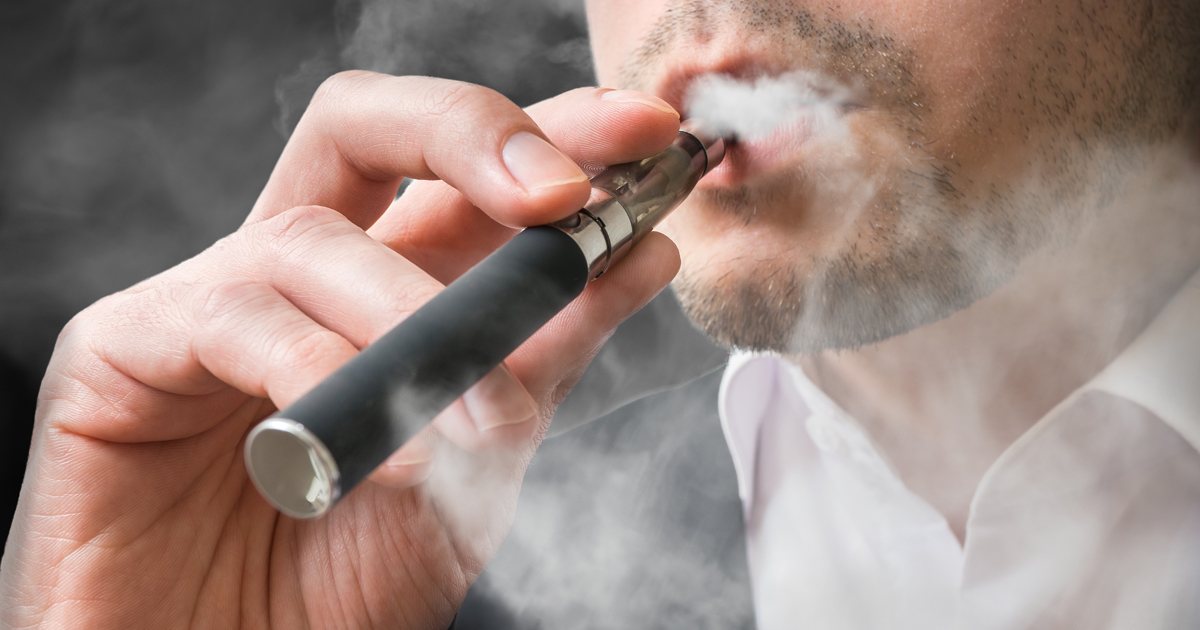
Electronic cigarettes are often touted as a safer alternative to their traditional counterparts. They typically have fewer chemicals and lower nicotine levels than regular cigarettes. They’re also marketed to smokers as a way to quit the habit, and advertised to young people with appealing packaging and flavors, like chocolate and cotton candy, and names like One Mad Hit Juice Box and Vape Heads Sour Smurf Sauce. Although organizations like the American Cancer Society and National Cancer Institute acknowledge that e-cigarettes may be less dangerous than conventional cigarettes, they stress that using e-cigarettes, or vaping, may still be harmful, and the long-term effects still aren’t known. But many doctors fear that message is getting lost amid vaping’s skyrocketing popularity.
“Vaping is increasing in popularity because, so far, there isn't any concrete research that definitively shuts it down. Even if certain e-cigarettes are promoted as containing 'natural' chemicals, you're still inhaling them at a high concentration, and any foreign materials you breathe in are damaging to the airway and could increase your risk of cancer,” says Brad Mons, DO, Head and Neck Surgeon at our hospital in Tulsa.
What are e-cigarettes?
E-cigarettes are battery-powered and deliver heated nicotine in aerosol form. They’ve only been available in the United States for a little more than a decade, since 2007. But despite experts’ cautionary warnings, business is booming, with industry analysts forecasting the market to be worth almost $50 billion worldwide by 2023. E-cigarettes also surpassed every other kind of tobacco product in 2014 to become the most commonly used form of tobacco among young people in the United States, with use among high school students jumping 900 percent between 2011 and 2015.
To help protect children from confusing vaping products sold in packages that may look more like juice boxes and candy than liquid nicotine, federal authorities are working to crack down on certain companies. In May, the U.S. Food and Drug Administration (FDA) and the Federal Trade Commission issued 13 warning letters to retailers that target children. According to FDA Commissioner Scott Gottlieb, the effort is part of a long-term campaign to reduce the use of vaping products by minors so a new generation of young people doesn’t become addicted, since those who use e-cigarettes are about four times as likely to smoke a cigarette.
The operation is also aimed at curbing young people’s use of Juul devices, which resemble flash drives or other small electronic devices, taste like fruit or mint, and have infiltrated schools across the country in recent years. “Schools lament that teenagers equate safer with safe,” reported one New York Times article on the vaping phenomenon.
Not approved as a cessation device
Among U.S. adults, a May study published in The Journal of the American Medical Association found that one in seven, or 33 million, have tried vaping. It may be that, because e-cigarettes are designed to resemble traditional cigarettes and simulate the cigarette-smoking experience, they’ve gained a greater following than other smoking cessation aids, such as nicotine-flavored gum and patches. Still, a 2017 study from the Centers for Disease Control and Prevention (CDC) found that although many adults use e-cigarettes to help them quit smoking, most don’t stop and, instead, continue using both products. The FDA has not approved e-cigarettes as a way to help people quit tobacco.
Today, scientists are studying e-cigarettes to understand how using them affects people’s health. According to the CDC, e-cigarettes have fewer than the 7,000 chemicals found in the smoke of regular cigarettes. But they may still contain substances like lead and other heavy metals, small particles that can be inhaled into the lungs, additives like propylene glycol and glycerol that may become carcinogenic when heated, and flavorings linked to lung disease, such as the buttery-flavored chemical diacetyl. Diacetyl has been linked to bronchiolitis obliterans, also known as popcorn lung, a serious lung disease that once commonly affected workers in microwave popcorn factories who developed symptoms after breathing in the chemical on a regular basis.
Although the results of ongoing studies on the long-term effects of vaping aren’t in yet, people looking to e-cigarettes as a way to wean off traditional cigarettes should find a better alternative, Dr. Mons says. “It will be interesting to see what the studies find, when they are completed, on the effects of vaping,” he says. “But right now, we just don’t have a full picture of the risks. We do know that there is no evidence to suggest that e-cigarettes are safer or more effective than existing, government-approved smoking cessation methods. Ask your doctor about those. Anything we can do to avoid irritants in the lungs and airway will, I believe, reduce our risk of developing cancer or recurrent cancer in the future.”


